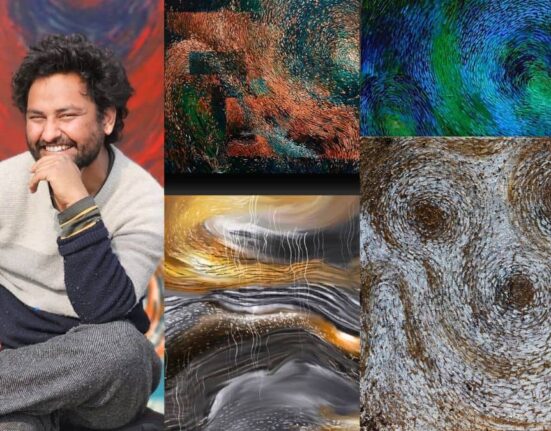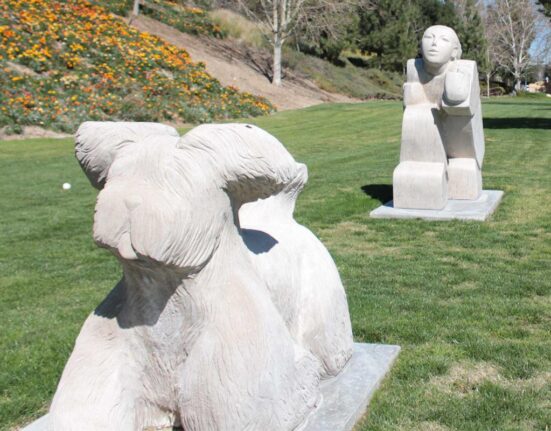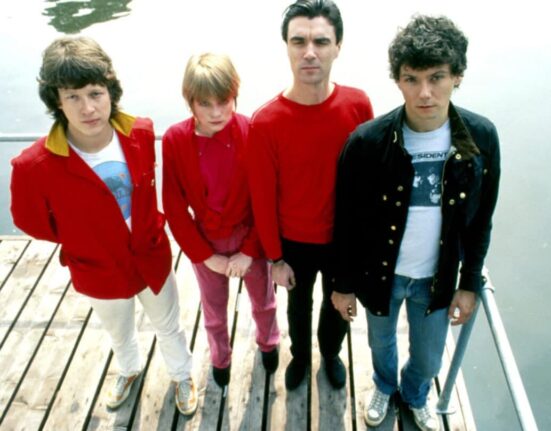There is something about the photographBandages-Bullets #1 that makes you keep coming back to it. At first, it seems like an image of a series of rolled bandages arranged in rows. When observed carefully, the visual of soiled bandages starts looking (remove) resembling rows of bullets. And that’s exactly the message that multidisciplinary artist Baptist Coelho hopes to impart to the viewers. “The photograph captures a paradoxical relationship between the bandages as tools of healing, and bullets as instruments of war,” writes Coelho as the description of the work.
There is something about the photographBandages-Bullets #1 that makes you keep coming back to it. At first, it seems like an image of a series of rolled bandages arranged in rows. When observed carefully, the visual of soiled bandages starts looking (remove) resembling rows of bullets. And that’s exactly the message that multidisciplinary artist Baptist Coelho hopes to impart to the viewers. “The photograph captures a paradoxical relationship between the bandages as tools of healing, and bullets as instruments of war,” writes Coelho as the description of the work.
This photograph is part of the artist’s ongoing multimedia series,Bandages-Bullets,and was developed during his year-long residency at the In Flanders Fields Museum, Ypres, starting in 2022. It was shown until last week at Coelho’s solo exhibition,It still hasn’t ended, at the Bâtiment IV, Esch-sur-Alzette, Luxembourg. Preparations are afoot to take this travelling show to other cities in Europe.
Premium benefits
35+ Premium articles every day
Specially curated Newsletters every day
Access to 15+ Print edition articles every day
Subscriber only webinar by specialist journalists
E Paper, Archives, select The Wall Street Journal & The Economist articles
Access to Subscriber only specials : Infographics I Podcasts
Unlock 35+ well researched
premium articles every day
Access to global insights with
100+ exclusive articles from
international publications
5+ subscriber only newsletters
specially curated by the experts
Free access to e-paper and
WhatsApp updates
This photograph is part of the artist’s ongoing multimedia series,Bandages-Bullets,and was developed during his year-long residency at the In Flanders Fields Museum, Ypres, starting in 2022. It was shown until last week at Coelho’s solo exhibition,It still hasn’t ended, at the Bâtiment IV, Esch-sur-Alzette, Luxembourg. Preparations are afoot to take this travelling show to other cities in Europe.
Bandages-Bulletscarries forth the artist’s ongoing engagement with the paradox of war and the everyday—its lasting imprint on histories, cultures and personal lives of soldiers. Coelho,born in Mumbai and currentlyliving and working between Ypres and Paris, explores different facets of this idea through installation, photos, sculpture, print, drawing, collage, audio/video and performance.
His exploration of war in everyday life started in 2007 when he returned to India after a Master’s in Arts from the Birmingham Institute of Art and Design, UK. He had been asked to respond to the idea of The Peace Project by the Museum of Contemporary Art, Denver, US. “The exhibition, through installations and performance art, explored issues of overpopulation, pollution, war and more, which threatened the idea of peace,” states a 2016-article in Mint. As part of that, he created537, a set of white gauze bandages rolled and assembled together. “Using bandages as a metaphor, Coelho is trying to heal the pain and wounds of the soldiers posted in Siachen,” it further stated.
Siachen has been a constant presence in his work. He started going to Ladakh in 2007 and with each trip, he tried to get closer to the glacier by navigating remote villages in the Nubra valley. He wanted to broaden his understanding of the conflict that takes place in Siachen, the coldest battlefield on earth located at 5,753 metres, by speaking to the locals, travellers and officers. This has resulted in a large body of work created over time. While some of it was shown at theTraces of War exhibition at Somerset House, London in 2016, a vast series of both recent and previous multimedia works were exhibited at It still hasn’t ended. “These artworks reveal the paradox of heroism when confronted by brutally cold climates, and the perils of uncertain border tensions. The title of the exhibition is inspired by the new eponymous artwork, which explores the past and current conflict, through fabric and food – worn and consumed by Siachen soldiers,” states the exhibition note.
In Coelho’swork, oral histories, letters, archival material and testimonies play an important role. He collects histories wherever he goes. For instance, he referred to the testimony of Sachin Bali, an ex-Siachen officer who lost six fingers and three toes to frostbite in Siachen in 2003.
Those who want to delve deeper into Coelho’s artistic process, and the connections he makes between war and healing to create critical points of view, can now read a monograph published by the In Flanders Fields Museum in 2023. This publication not only offers an overview of his works from 2006 till today, but also contains ten essays by academics, curators, historians and a mountaineer. Edited by Cécile Bourne-Farrell and Dominiek Dendooven (BE), and assisted by Paul Griffiths (UK), the monograph—the first for Coelho—is available for sale at the museum’s webshop.
It was published on the occasion of his year-long residency and exhibition, Agar is dharti tay koyi jannat hai, o ay hi hai, ay hi hai, ay hi hai at the museum from 15 July 2022 to 8 January 2023.
The monograph features 56 works, including those based on exchanges of letters between soldiers and families. “For the Siachen Glacier project, I had various conversations with former army officers. At the British Library in London, I started looking at Indian soldiers’ presence in the World Wars based on reports of letters exchanged between them and their families. Various artworks look at how thoughts and day-to-day conversations were recorded in these letters,” says Coelho in an email interview. The artist would then improvise on these recorded exchanges, read between the lines and find discreet critical points of view. He even developed a sculptural work, Out there, nothing survives—a cold play unit—which created a narrative around an officer posted in Siachen through objects found on the glacier. “In the travelling exhibition and the monograph, you will see sculptural works made with coarse bandages, socks, uniforms and thermal garments converted into parachutes. These chronicle the everyday life of soldiers,” elaborates Coelho.
In one of the essays in the monograph, titled “Baptist Coelho: The Figure of the Soldier and the Everyday in Locations of War”, Vivienne Jabri, a professor of international politics in the Department of War Studies at King’s College London, writes that Coelho’s works are not linear narratives of such hostile locations. “And though constructed with care and empathy, there is no sentimentality here, nor the desire to shock an audience into judgement, variously of the soldier or the wars and conflicts in which soldiers carry out their duty,” she states.
Jabri further adds that the artist’s dialectical imaginary is certainly evident as is his critical sense of history and its power to inscribe the subject; the soldier evoked in his installations, the artist himself, the viewer invited into the existential spaces that Coelho makes available in the gallery space. “His art is anti-heroic and in being so focused on the routine and the everyday, as indicated at the outset. The lens shifts from the battlefield as an extraordinary event to the battlefield in its everyday and the routine,” she writes.
Coelho first visited the In Flanders Museum in 2016, which was housed within a cloth hall destroyed in the First World War. Between his visits in 2016 to 2022, he started to have a dialogue with the artworks housed within. “I wanted to see how a contemporary artist could enter into a conversation with a historical museum,” he says. This resulted in a project, Approximately 74,187, which is a series of proposed artworks that responded to many aspects of the museum displays from start to finish. 10 artworks were planned to be positioned within the permanent displays and the red vitrines to be edited from time to time. Due to technical constraints, the project wasn’t realised as a whole apart for one artwork titled Wreath #1. “Within the museum, one can see a display of the various objects that belonged to soldiers from the colonial forces. Within one of the red vitrines I placed, Wreath #1, which is a made of bandages and sharp metal blades. It questions the invisibilisation of the sacrifice made by these soldiers in the World Wars,” elaborates Coelho.
The museum also has elaborate country-specific displays of soldier’s uniforms from the various Western nations, which participated in the war.But where are such detailed uniform displays of soldiers from the colonies?” he asks. So, he created The cold was terrible… not being able to sleep on the ground in the open…, which is a green kurta placed on stand. “One arm of the shirt and two epaulettes are covered with numerous steel pins, like needles pierced from the inside and protruding outwards to form a very emphatic and unsafe surface”, says the artist.Towards the end of the museum’s display, the artist placed photographs, which is part of his series, Camouflage. Here four photographs are seen lying flatnext to objects belonging to soldiers, scattered across the battle landscape.
In the essay featured in the monograph, titled ‘The Silent Change. India, Europe, and the First World War’, Dominiek Dendooven, a former researcher and curator at the In Flanders Fields Museum, sheds light on this aspect of Coelho’s practice. He writes about the trauma and sense of alienation that Indian soldiers faced when sent to the western front and confronted with an industrialised war fought with modern machinery.
“Finally, finding themselves in an entirely unfamiliar landscape, often utterly destroyed, and surrounded by a completely different culture, where no one spoke their mother tongue, can only have made the feeling of alienation total. These are aspects that intrigued Baptist Coelho in his practice as an artist, and certainly during his residency at the In Flanders Fields Museum in Ypres,” he writes.
During his tenure as an artist-in-residence, Coelho searched for archival material and records about Indian soldiers, who participated in the war more than 100 years ago. And this also resulted in the large-scale work, Agar is dharti tay koyi jannat hai, o ay hi hai, ay hi hai, ay hi hai, which when translated into English, reads as ‘If there be paradise on earth, it is this, it is this, it is this’. “Baptist worked with the sharp, the cold, and the hard materials that are reminiscent of trench warfare. By constantly reworking and adding items to his artwork and for making interventions in the permanent exhibition of the In Flanders Fields Museum, a makeshift studio was set up in a hidden corner of the museum. His work of reflection was confronted with the historical material from Dominique Faivre’s collection: kukri, khaki shirt, metal pot and plate, gauze bandage, broaches and a translation booklet that was supposed to enable communication between Indians and Westerners,” writes Dendooven.
Letters play an important role not just in Coelho’s work but also his life. “I had a lot of pen friends and have always liked the idea of writing letters,” he says. So in Blueys, a mixed-media installation, he used handwritten and printed letters exchanged by a British soldier with his wife and children during his posting in Iraq in 2003. These are juxtaposed against the language cards issued by the British government to this soldier, with a limited set of Arabic words that would assist in communicating with the local Iraqis. “The words in these language cards are stilted and lack emotion. They are mere SOS words to be used in an emergency. Now compare that to the free-flowing language that we use while communicating with our loved ones, as can be seen in the letters. The letters between the couple speak of loneliness, love, fear,” Coelho had said in a 2016-interview to Mint.
He feels that an artist needs to constantly reflect on past and present happenings while hoping for the future. “Every artist has their own way of coming to terms with this. There is no fixed rule on how one should react, contemplate or confront situations. Having said that, it is important for artists to be critical and voice their point of view. While there are a lot more democratic platforms to voice one’s opinion, there is also a rising level of censorship and blocking. It is a maze that we are in today, and artists need tocreatively and criticallynavigate that,” says Coelho.






